Nursery – Spring
September - Culvating
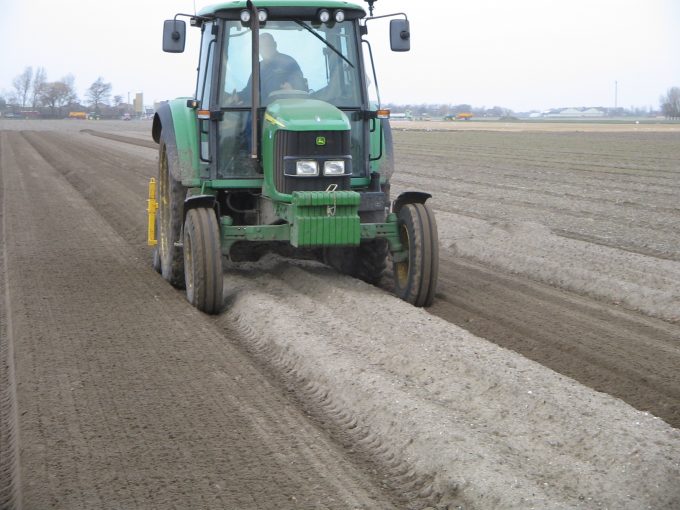
First the soil must be prepared; we plough it, take care of the drainage and make the soil suitable for planting the flower bulbs. All this is done with special machinery.
October - Planting
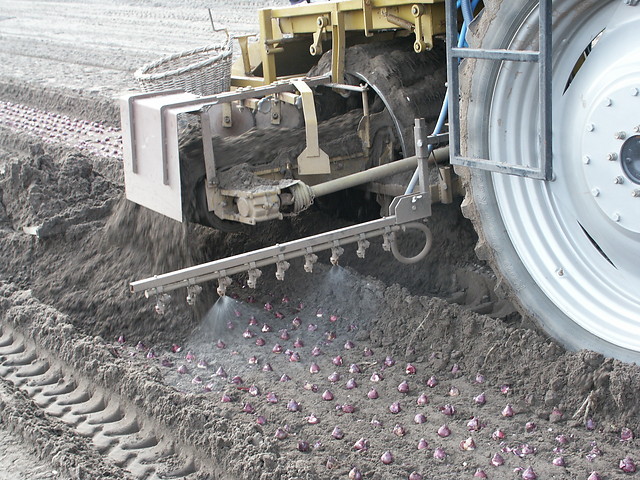
After preparing the soil, the bulbs are carefully planted. Each type of bulb has its own planting period. To minimize the risk of disease, the fields are changed annually. The planting machine puts the bulb into the ground at a certain depth and then covers with soil. Once the bulbs are planted, the ‘bed’ is then covered with a layer of straw. This ´straw covering´ is needed to protect the bulbs against the winter cold.
May - Selecting
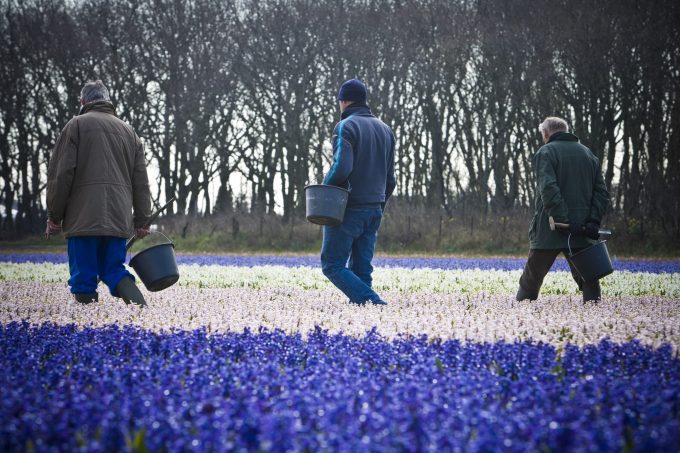
Selection takes place when the bulbs are in bloom in spring. ‘Selectors’ walk along the beds and remove the ‘sick’ bulbs from the soil. This selection work is called ‘sick searching’ and requires special training. The fields are checked for diseases by the Flower Bulb Inspection Service. A third party then determines whether the flower bulbs are suitable for export. Stringent regulations apply, particularly for export to Japan. Our entire crop meets these stringent regulations, which means that the quality level of our ‘Bulb Nursery’ is very high.
June - Harvesting
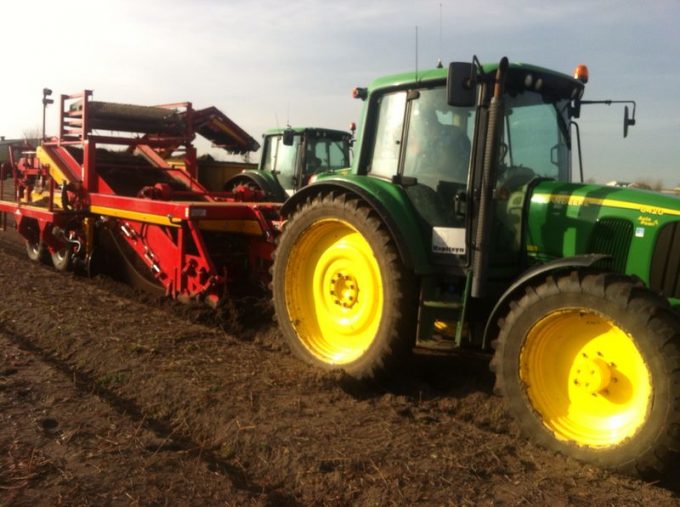
Harvesting starts around mid-June. Harvesters ensure that the flower bulbs are removed from the soil undamaged. The harvester lifts the bulb and earth from the soil simultaneously, then using the chain conveyer, the earth is separated from the bulb, after which it falls into a crate or tipper for further processing. People on the harvester ensure that any remaining weeds, stones and dirt are removed before the bulbs fall into the crate. At this stage the bulbs are still dirty and wet and need further processing before they become the high-quality bulbs the customer have ordered.
July - Drying
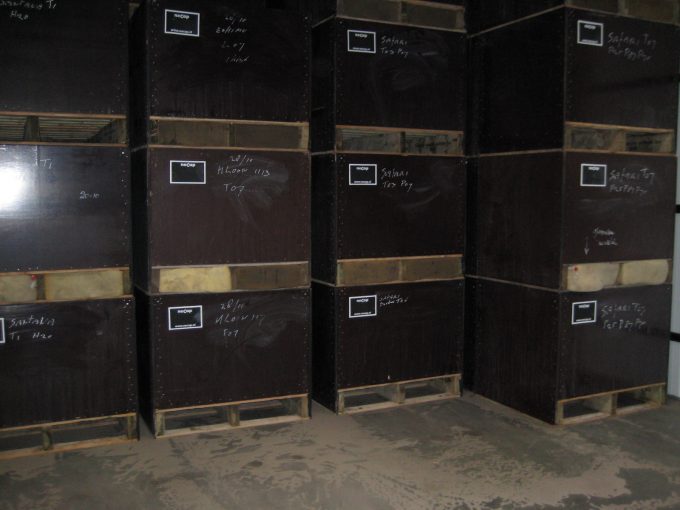
To prevent the flower bulbs from going mouldy or developing diseases, it is important that they are dried quickly. The crates with grubbed bulbs are placed in front of drying walls. Then a mixture of hot air and fresh air are blown along the bulbs. By finding a good balance between hot air and fresh air, the drying time of the bulb is considerably shortened. After drying, the bulbs are temporarily stored or immediately cleaned. The climate in the storage area is monitored 24 hours a day, 7 days a week via a climate computer. The system records and continuously monitors the temperature, humidity, ventilation and heating. The computer automatically warns the logistics manager by phone in case of any irregularity.
July - Cleaning
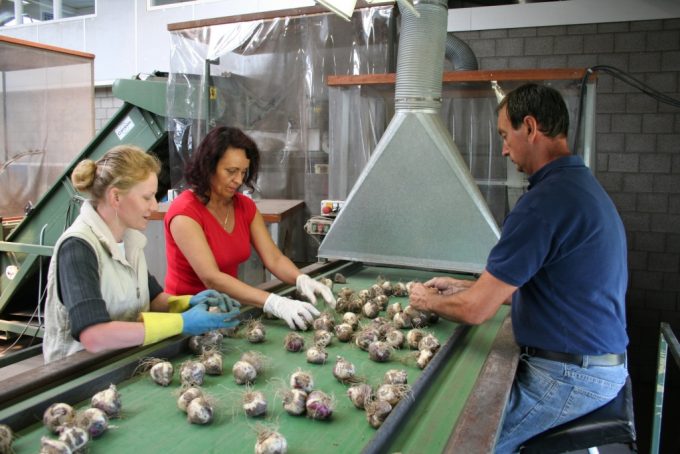
At this stage, the bulbs are still dirty and the small bulbs are still attached to the ‘mother bulbs’. The bulbs cannot be delivered in this form so they need to be cleaned. Roots and old material have to be removed. The flower bulbs are usually cleaned by machine but the final check always has to be conducted with the human eye.
July - Sorting
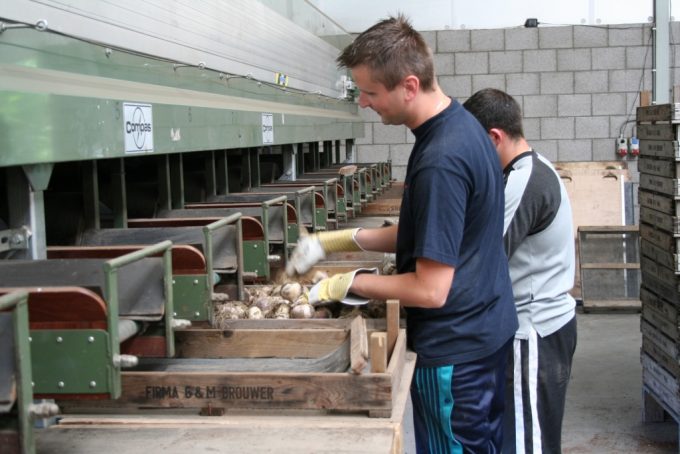
Once the bulbs are clean, they are then sorted by size using a sorting machine. Bulb sizes are standardized in the flower bulb sector. During sorting, the quality of the bulbs is continuously monitored. Some of the sorted bulbs, the smallest sizes, are replanted by the nursery. These bulbs in turn form the basis for the harvest of the following year. Immediately after sorting, the bulbs are automatically counted using a counting machine. The counting machine can count 200,000 to 300,000 bulbs a day. The bulbs are counted in different varieties and packaging, depending on what the customer has ordered. After counting, the packaged bulbs are delivered or temporarily stored in climate controlled storage rooms.
August/September - Delivery
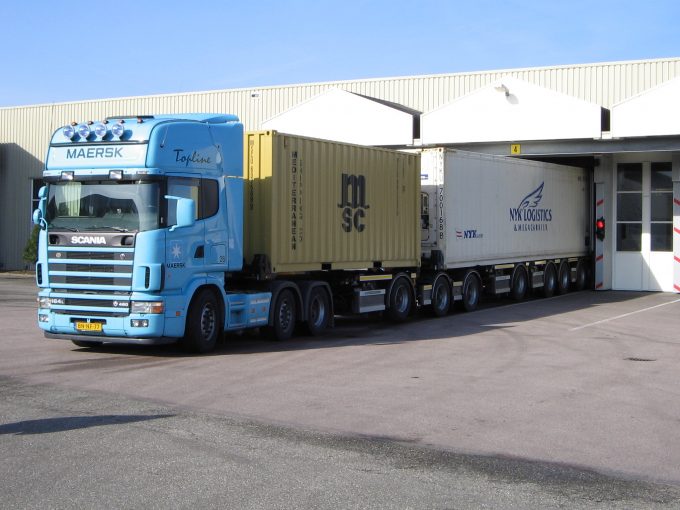
Before leaving the nursery the crates are labeled and transport papers printed. This process is automated with special software for bulb growers. For more information about this software please visit: www.agrovision.com. This software takes care of the administration of the production, the registration of fertilizer, agents and other planting information.


